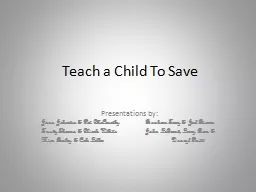PPT-P.Y.F. Welcome! Explain why it is important to save
Author : pasty-toler | Published Date : 2018-12-13
Determine goals for saving money Identify savings options Determine which savings options will help you reach your savings goals Recognize which investment options
Presentation Embed Code
Download Presentation
Download Presentation The PPT/PDF document "P.Y.F. Welcome! Explain why it is import..." is the property of its rightful owner. Permission is granted to download and print the materials on this website for personal, non-commercial use only, and to display it on your personal computer provided you do not modify the materials and that you retain all copyright notices contained in the materials. By downloading content from our website, you accept the terms of this agreement.
P.Y.F. Welcome! Explain why it is important to save: Transcript
Download Rules Of Document
"P.Y.F. Welcome! Explain why it is important to save"The content belongs to its owner. You may download and print it for personal use, without modification, and keep all copyright notices. By downloading, you agree to these terms.
Related Documents














